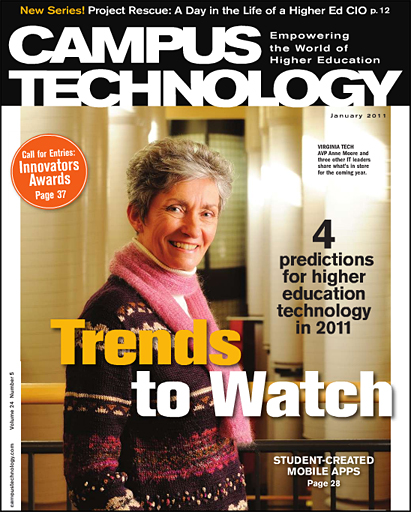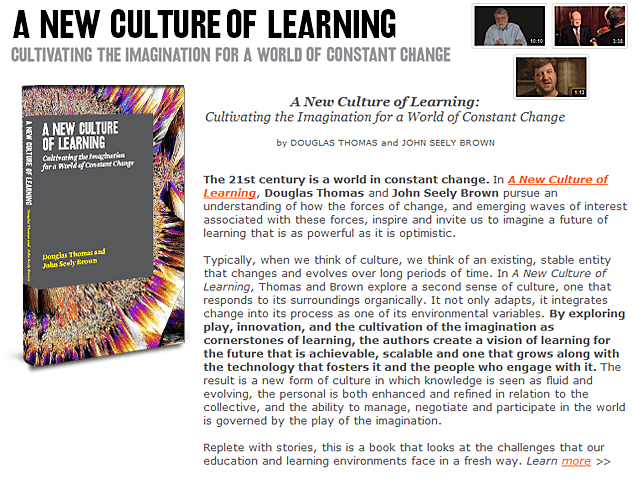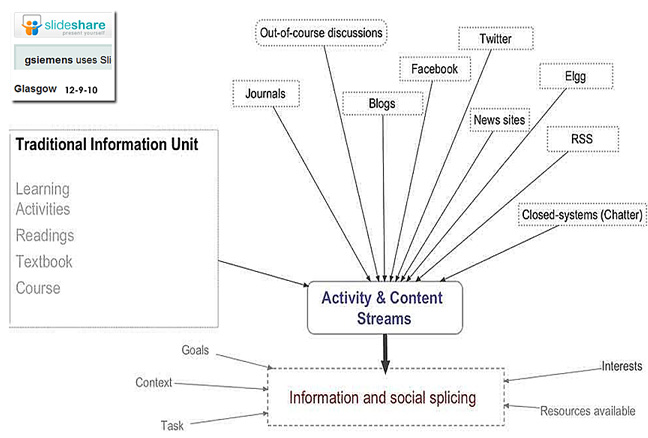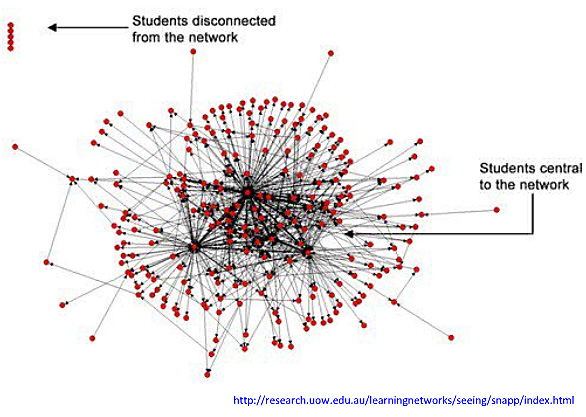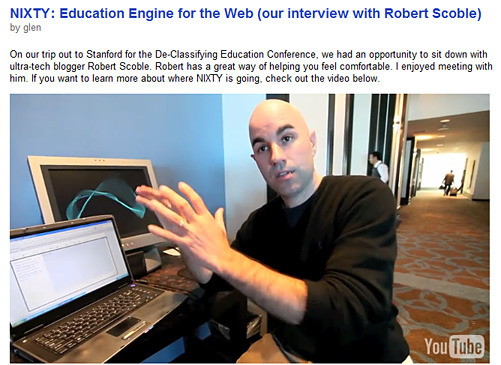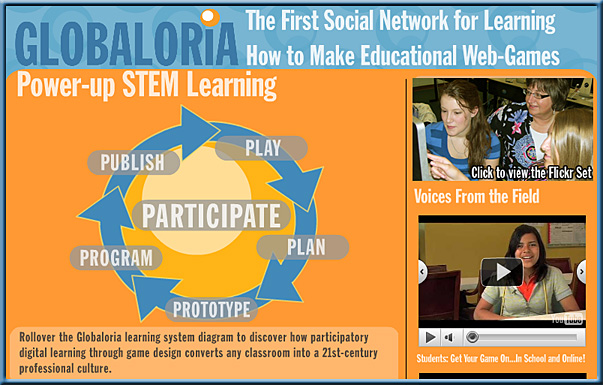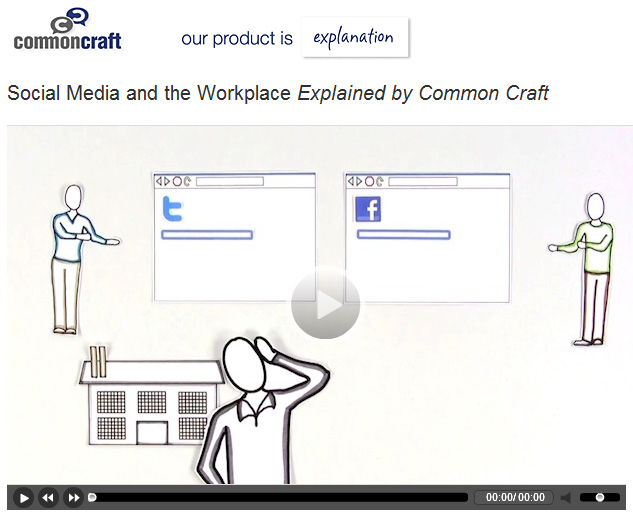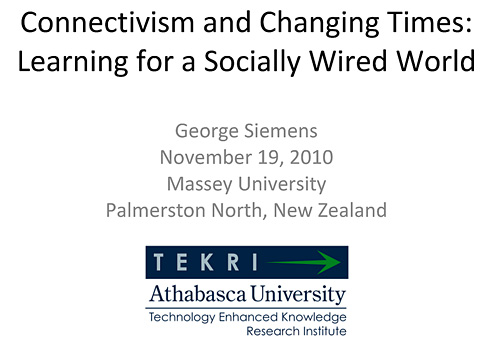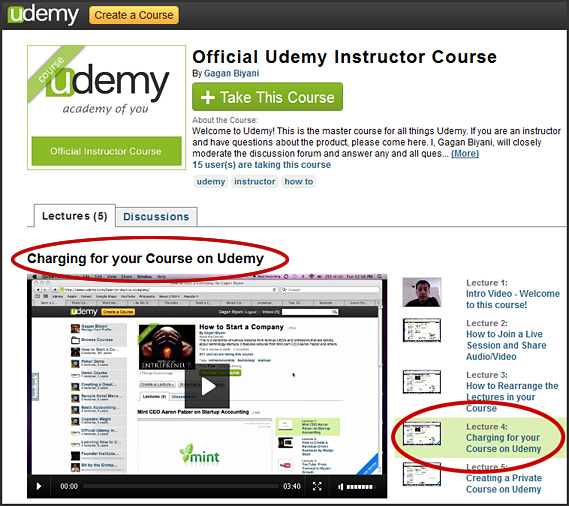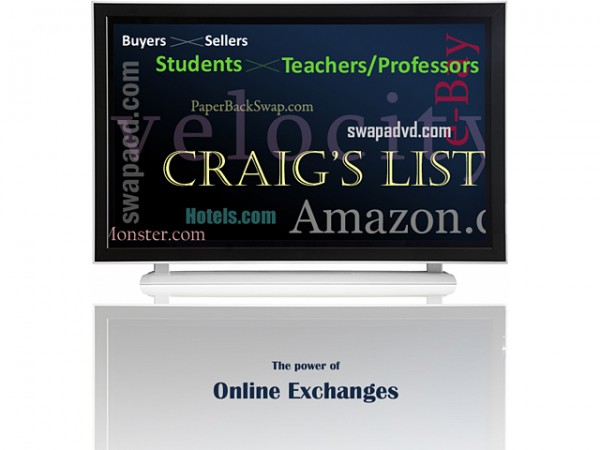Connecting classrooms globally — from prometheanplanet.com
Includes the acceleration of learning analytics and learner-generated content, knowledge application supplanting information access, digital textbooks making their move, data-intensive computing challenging IT — as well as predictions concerning faculty development (as even more courses move online), mobile learning, student expectations, open education, collaboration, social media and others.
Original posting from:
A New Culture of Learning — weblogg-ed.com
Addendum on 1-31-11:
I just saw this posting from Catherine Lombardozzi on the Learning Journal blog, as she comments on Thomas’ & Seely Brown’s book. She concludes:
“I’m thinking that the new culture of learning doesn’t replace the old, it enriches it.”
See:
http://learningjournal.wordpress.com/2011/01/30/thenew-culture-of-learning/
2011 NMC Symposium on New Media and Learning
March 29, 2011 – March 31, 2011
Online hosted by NMC
The 2011 NMC Symposium on New Media and Learning, the seventeenth in the NMC’s Series of Virtual Symposia, will explore the impact of new media on teaching, learning, research, and creative inquiry, especially in higher education.
The 2011 NMC Symposium on New Media and Learning, the seventeenth in the NMC’s Series of Virtual Symposia, will explore the impact of new media on teaching, learning, research, and creative expression, especially in higher education. New media, for this event, is interpreted broadly as anything from creative uses of digital media and new forms of communication to alternative publishing methods and media-rich tools. The Symposium seeks to explore new media in the context of a current social phenomenon and not simply as a means of content delivery.
Proposals are encouraged on any of the following themes, but this list is not exhaustive and selections will not be limited to these categories:
- digital gaming in education
- digital storytelling practices
- new forms of multimedia production and delivery
- social media, social networking and global connections
- new media and mobile devices
- data visualization
- media-rich communication tools
- new literacies
- any technology or practice that shows promise for engaging students and supporting teaching and learning using new media
Next Generation Learning — from The Great Ideas Conference
Excerpt:
Learning is undergoing drastic changes. Access to technology has allowed us to engage in a range of new media activities including blogging, co-creation, gaming, instant messaging, podcasting, social networking, social sharing and video creation. These new forms of media allow us to communicate and collaborate in new ways.
Next Generation Learning at Great Ideas 2011 will look at what the research says in terms of how people learn differently with the use of these new forms of media and how to successfully apply and implement the research in your association. No other time in history has there been this type of convergence for associations providing learning and education. It will also be a learning lab that models unique, innovative education formats including hands-on interactive activities to live-streaming to facilitated Peer2Peer Roundtables. Come experience the content and see new ways to involve others in learning.
Interview with Josh Little, Bloomfire: E-Learning Innovators Series — from E-Learning Queen
Excerpt:
2. What is Bloomfire and what inspired you to develop it?
A platform that allows anyone to start a Bloomfire, which is a website geared specifically for easily sharing knowledge and the discussions that surround it. You can invite members to find and follow experts, ask questions, and share with others. Members can share and upload documents, videos, or presentations, record a video from their webcam, or create screencasts on the fly.
I developed Bloomfire out of the pain I felt along my career as a public school teacher, corporate trainer, and small business owner. In every one of these roles I felt like I was just scratching the surface of what my students, trainees, or employees needed to know to be successful. There needed to be a better way to rapidly share knowledge with people all over the world. Although traditional eLearning tools allow this, the time and cost to create content was still limiting. I knew that by using the power of the crowd, any organization could harness the the long talk of knowledge, how-to’s and tricks if they had the right tool.
Connections, Clouds, Things & Analytics –– from George Siemens
From DSC:
In looking through George’s presentation, the following graphic reminded me of a learning ecosystem. The idea of activity and content streams speaks of constant flow, change, new information. Look are the sources of where learning can come from:
.
As an instructional designer, how do we incorporate all of this?
Finally, one other thought, if we are not connected to a network of bloggers (and have a series of RSS feeds keeping us constantly up-to-date) or have some other means of tapping into these streams of activities and sources of content, we will look like this:
The 2011 NMC Summer Conference includes four themes:
Threads in these themes include, but are not limited to, the following:
- Emerging uses of mobile devices and applications in any context
- Highly innovative, successful applications of learning analytics or visual data analysis
- Uses of augmented reality, geolocation, and gesture-based computing
- Discipline-specific applications for emerging technologies
- Challenges and trends in educational technology
- Projects that employ the Horizon Report or Navigator in any capacity
.
- Challenge-based learning
- Game-based learning
- Digital storytelling as a learning strategy
- Immersive learning environments
- Open content resources and strategies
- New media research and scholarship
- Challenges and trends in new media and learning
.
- Fostering/Supporting/budgeting for innovation
- Supporting new media scholarship
- Collaboration as a strategy
- Learning space design, in all senses of the words
- Use, creation, and management of open content
- Experiment and experience; gallery as lab, lab as gallery
- Challenges and trends related to managing an educational enterprise
.
- Designing for mobile devices in any context
- Social networking — designing, monitoring, maximizing social tools
- Experience design
- Creating augmented reality
- Creating the next generation of electronic books
- Optimizing digital workflows
- Strategies for staying current with new media tools
From DSC:
Below are some notes and reflections after reading Visions 2020.2: Student Views on Transforming Education and Training Through Advanced Technologies — by the U.S. Department of Commerce, U.S. Department of Education, and NetDay
Basic Themes
- Digital Devices
- Access to Computers and the Internet
- Intelligent Tutor/Helper
- Ways to Learn and Complete School Work Using Technology
Several recurring words jumped off the page at me, including:
- Voice activation
- A rugged, mobile, lightweight, all-convergent communications and entertainment device
- Online classes
- Interactive textbooks
- Educational games
- 3D virtual history enactments — take me there / time machine
- Intelligent tutors
- Wireless
- 24x7x365 access
- Easy to use
- Digital platforms for collaborating and working with others on schoolwork/homework
- Personalized, optimized learning for each student
- Immersive environments
- Augmented reality
- Interactive
- Multimedia
- Virtual
- Simulations
- Digital diagnostics (i.e. analytics)
- Wireless videoconferencing
Here are some quotes:
Math and reading were often cited specifically as subjects that might benefit from the use of learning technologies. (p. 5)
No concept drew greater interest from the student responders than some sort of an intelligent tutor/helper. Math was the most often mentioned subject for which tutoring help was needed. Many students desired such a tutor or helper for use in school and at home. (p. 17)
…tools, tutors, and other specialists to make it possible to continuously adjust the pace, nature and style of the learning process. (p.27)
So many automated processes have been built in for them: inquiry style, learning style, personalized activity selection, multimedia preferences, physical requirements, and favorite hardware devices. If the student is in research mode, natural dialogue inquiry and social filtering tools configure a working environment for asking questions and validating hypotheses. If students like rich multimedia and are working in astronomy, they automatically are connected to the Sky Server which accesses all the telescopic pictures of the stars, introduces an on-line expert talking about the individual constellations, and pulls up a chatting environment with other students who are looking at the same environment. (p.28)
— Randy Hinrichs | Research Manager for Learning Science and Technology | Microsoft Research Group
From DSC:
As I was thinking about the section on the intelligent tutor/helper…I thought, “You know…this isn’t just for educators. Pastors and youth group leaders out there should take note of what students were asking for here.”
- Help, I need somebody
- Help me with ____
- Many students expressed interest in an “answer machine,” through which a student could pose a specific question and the machine would respond with an answer. <– I thought of online, Christian-based mentors here, available 24x7x365 to help folks along with their spiritual journeys
Network Learning: Working Smarter — by Harold Jarche
We need to re-think workplace learning for a networked society. Our organizational structures are becoming more decentralized, with individual access to almost unlimited information, distributed work teams, and digital media that can be copied and manipulated infinitely. In the interconnected workplace, who we know and how we find information are becoming more important than what we know.









